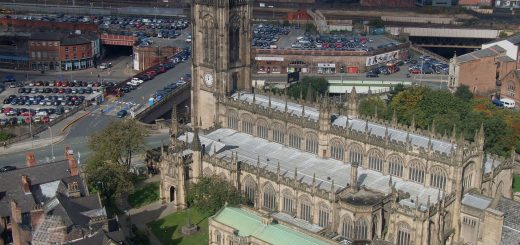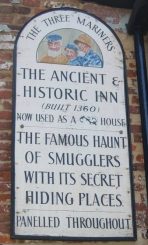Leeds Castle
Leeds Castle is named after Led who is supposed to have been the Chief Minister of King Ethelbert IV of Kent. Originally a Saxon manor house called Esledes, built in AD857, it consisted of a wooden palisade and earthwork enclosure. It was granted to the Godwin family by King Edward the Confessor but did not become a stone castle until Robert Crevecoeur started upgrading it in 1119. The only surviving part of this twelfth century castle is now the cellar.
 Leeds became a Royal House and was extensively modified by Edward I of England after he took possession of it in 1278 with his wife Eleanor of Castile. Leeds acquired the reputation of being a ladies castle and has been the Royal residence of six medieval Queens of England and was last besieged in 1321 – when it fell to Edward II after his wife was refused admission. The siege started when Lord Badlesmere, a supporter of Lancaster, refused Queen Isabella access whilst she was traveling to Canterbury. Edward II besieged the castle for a week before it capitulated, which did not give the Marcher Lords (who supported Badlemere) time to come further than Kingston-upon-Thames before it was all over. Edward then turned on the rebellious Marcher Lords.
Leeds became a Royal House and was extensively modified by Edward I of England after he took possession of it in 1278 with his wife Eleanor of Castile. Leeds acquired the reputation of being a ladies castle and has been the Royal residence of six medieval Queens of England and was last besieged in 1321 – when it fell to Edward II after his wife was refused admission. The siege started when Lord Badlesmere, a supporter of Lancaster, refused Queen Isabella access whilst she was traveling to Canterbury. Edward II besieged the castle for a week before it capitulated, which did not give the Marcher Lords (who supported Badlemere) time to come further than Kingston-upon-Thames before it was all over. Edward then turned on the rebellious Marcher Lords.
Leeds Castle sits over three islands in an artificial lake. The outermost island or Barbican could be reached by three causeways: each defended by a gatehouse, drawbridge and portcullis. The northern causeway was also defended by a fortified Mill. The Barbican was linked to the largest island by a bridge; defended by a gatehouse that rose out of the water with fifteen foot high walls. The third island is the smallest and boasts the Gloriette, which is a Keep built by Edward I and named for his wife Eleanor.
 Henry VIII spent a large amount of money improving the castle and attributed the work to his wife Catherine of Aragon. Henry’s second daughter, and future Queen Elizabeth I, was imprisoned in the castle for a short time before taking the throne.
Henry VIII spent a large amount of money improving the castle and attributed the work to his wife Catherine of Aragon. Henry’s second daughter, and future Queen Elizabeth I, was imprisoned in the castle for a short time before taking the throne.
In 1552 the Lord Deputy of Ireland, Sir Anthony St.Leger was granted Leeds. After this it passed to the Smyth and the Culpeper family. In the Civil War the Culpepers allowed Leeds to be an arsenal for the Parliamentary forces.
In 1821 the castle was inherited by the Wykeham Martins and then bought by Lady Baille, daughter of Almeric Paget, 1st Baron Queensborough, in 1926. The castle today has been faithfully restored by the Leeds Castle Foundation which was created in Lady Bailles will.
 Leeds Castle is not famous for being haunted by any of its many famous owners and guests. Instead it is reputed to be haunted by a large Black Dog whose appearance is seen as an omen of death.
Leeds Castle is not famous for being haunted by any of its many famous owners and guests. Instead it is reputed to be haunted by a large Black Dog whose appearance is seen as an omen of death.
This dog has been associated with Eleanor Cobham, Duchess of Gloucester and wife to the Lord Protector who was tried and convicted of witchcraft and treason circa 1440. She was held at Leeds for a short time prior to her trial. I am not sure why a Black Dog would be associated with her but, strangely enough, Peel Castle on the Isle of Man is also haunted by a Black Dog, and this is where the Duchess of Gloucester spent her final fourteen years in captivity.
Photographs by Simon Topham




Recent Comments